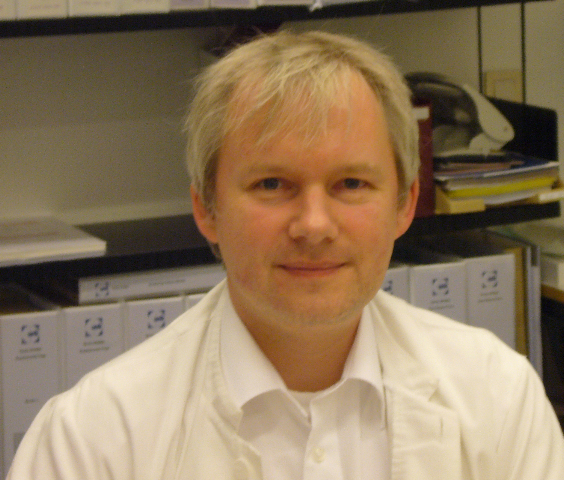|
IEEE
CME 2012 Conference
Plenary
Talk 2
Non-invasive brain stimulation with transcranial direct currents (tDCS): basics and functional effects
Michael A. Nitsche, M.D.
Professor
Laboratory of Systemic Neurosciences
Department of Clinical Neurophysiology,
Georg-August-University,
Goettingen, Germany
E-mail
mnitsch1@gwdg.de

Abstract:
Transcranial direct current stimulation is a non-invasive brain stimulation
tool suitable to modulate cortical excitability acutely and for longer
durations. Whereas the primary effect is a shift of resting membrane potential,
the after-effects of stimulation resemble mechanisms of synaptic plasticity.
Its plasticity-inducing features make it an attractive tool to modulate
cognitive functions which are associated with dynamic alterations of cerebral
connectivity. Moreover, a multitude of neuropsychiatric diseases is associated
with pathological alterations of neuroplasticity. Also here tDCS is a potential
attractive adjunctive intervention. In this talk, an introduction will be given
about basic physiological mechanisms of tDCS, and functional effects in health
and disease. Finally, strategies to optimize the efficacy of tDCS will be
discussed.
Michael A. Nitsche is Associate Professor at the department of Clinical Neurophysiology of the Georg-August-University, Goettingen. He is the head of the laboratory of Systemic Neurosciences, and a leading expert in plasticity research in humans, including non-invasive brain stimulation, neuropsychopharmacology, and cognition. He received grants from various funding organizations, including the German Research Foundation. He published more than 100 papers in international peer-reviewed journals, and is member of the editorial board of The Journal of Neuroscience, Clinical Neurophysiology, and Restaurative Neurology and Neurosciences. He received the Alois Kornmィケller Award by the German Society of Clinical Neurophysiology, and the GESET Award by the German society of Electrostimulation and Electrotherapy for his work on non-imvasive brain stimulation in humans.
|